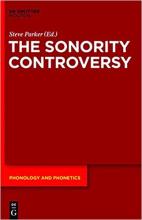The behavior of clusters of obstruent consonants and of clusters of sonorant" "s is not well explained by the Sonority Sequencing Principle or the Sylla-" "consonant" "ble Contact Law. Their phonotactics find more comprehensive explanations in the pre- dictions of a theory of perceptual acoustic cue robustness. We explain this theory, re- view and refine the results of cross-linguistic surveys of all-obstruent or all-sonorant sequences, and add specific case studies of Korean and Modern Greek. We conclude that the correct predictions of the Sonority Sequencing Principle and the Syllable Con- tact Law are subsumed under the cue approach, which makes fewer incorrect predic- tions, avoids stipulations concerning sibilants, and covers a wider range of phonotactic" "generalizations.
